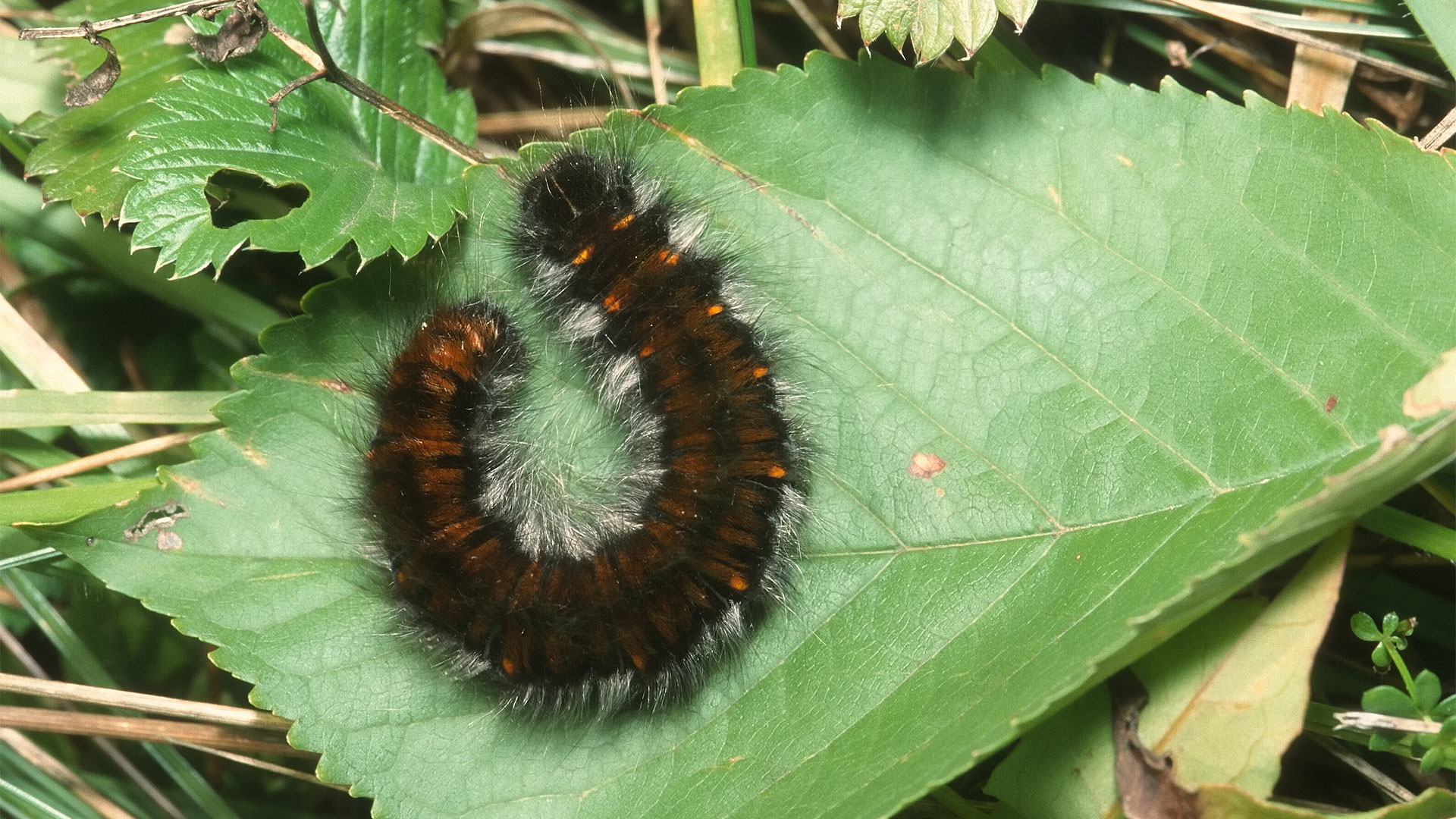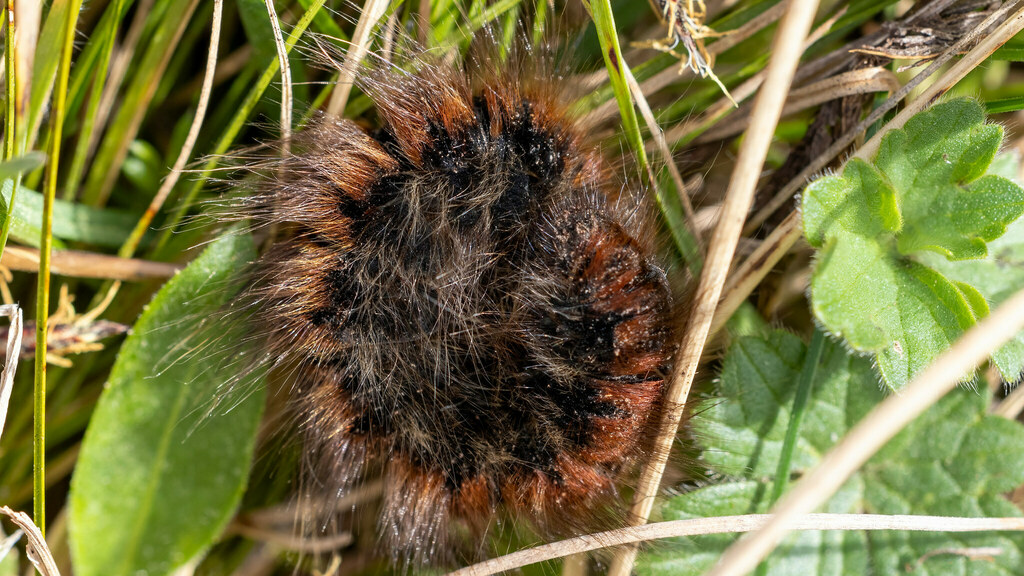The length of this larvae was about 8 cm which is the maximum length of the adult larvae. Easy to determine because of the size and the hairy black and grey look, but also because of the segmental orange-yellow markings only seen from the side.

Flight-period Central Europe: from May to Mid July
| Jan | Feb | Mar | Apr | May | Jun | Jul | Aug | Sep | Oct | Nov | Dec | |||||||||||||
|---|---|---|---|---|---|---|---|---|---|---|---|---|---|---|---|---|---|---|---|---|---|---|---|---|
| Imago | ||||||||||||||||||||||||
| Larva | ||||||||||||||||||||||||
Conservation Status in Austria: Least Concern (LC)
| NE | DD | LC | NT | VU | EN | CR | RE | EX | |
|---|---|---|---|---|---|---|---|---|---|
| Austria |
| English: | Fox Moth |
| German: | Brombeerspinner |
| Danish: | Brombærspinder |
| Date: | 13/09/2003 |
| Location: | Austria, Niederösterreich, Ober-Danegg |
| Copyright: | Per Hoffmann Olsen |
| Camera: | Canon EOS 500N |
| Lens: | Sigma 180mm 1:3.5 Macro |
The length of this larvae was about 8 cm which is the maximum length of the adult larvae. Easy to determine because of the size and the hairy black and grey look, but also because of the segmental orange-yellow markings only seen from the side.


